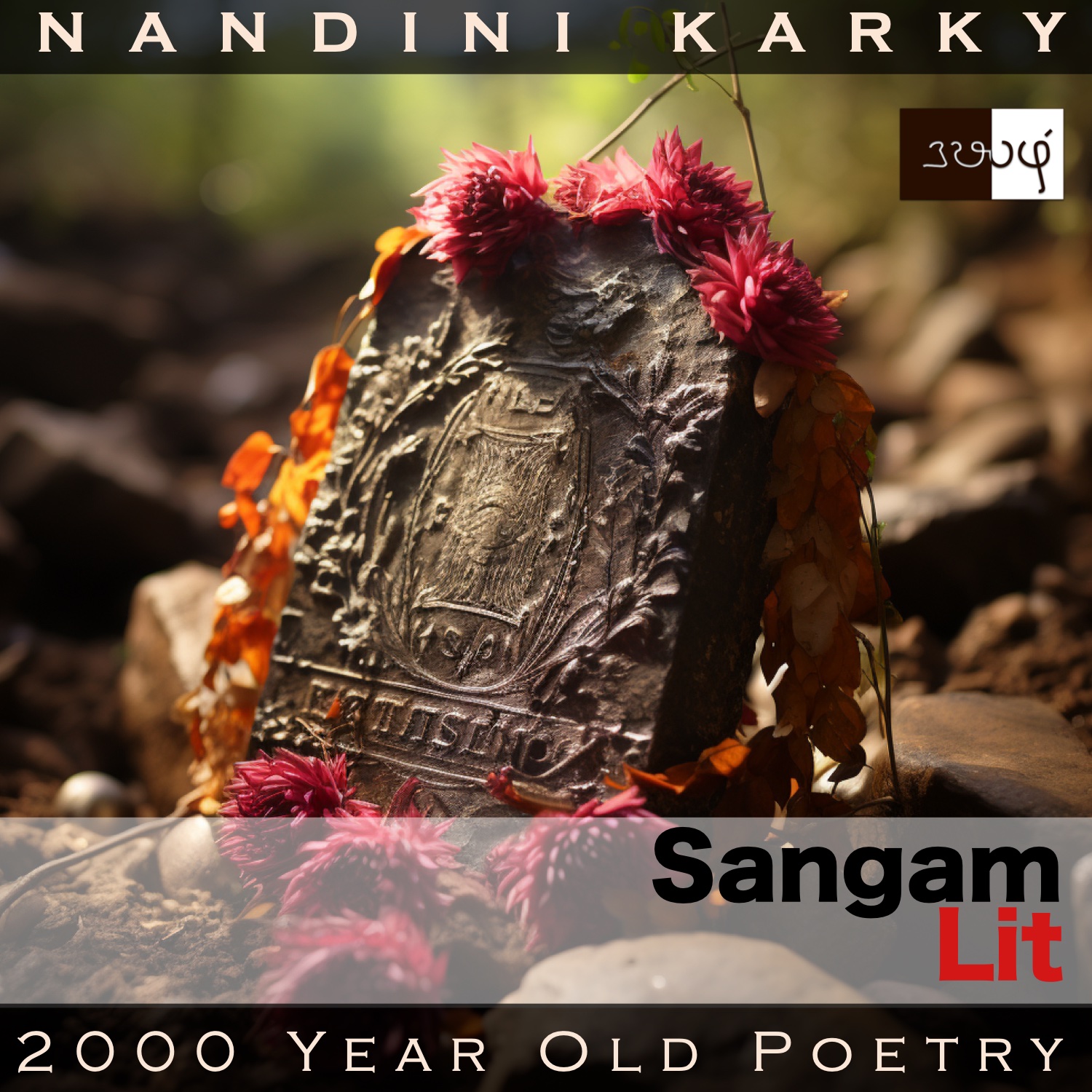Podcast: Play in new window | Download
Subscribe: Apple Podcasts | Spotify | Amazon Music | Android | iHeartRadio | Email | TuneIn | RSS | More
In this episode, we learn about customs relating to memorial stones, as depicted in Sangam Literary work, Puranaanooru 264, penned by the poet Uraiyoor Ilampon Vaanikanaar. The verse is situated in the category of ‘Karanthai Thinai’ or ‘Cattle recovering’ and speaks about the consequence of losing a leader.

பரலுடை மருங்கின் பதுக்கை சேர்த்தி,
மரல் வகுந்து தொடுத்த செம் பூங் கண்ணியொடு,
அணி மயில் பீலி சூட்டி, பெயர் பொறித்து,
இனி நட்டனரே, கல்லும்; கன்றொடு
கறவை தந்து பகைவர் ஓட்டிய
நெடுந்தகை கழிந்தமை அறியாது,
இன்றும் வரும்கொல், பாணரது கடும்பே?
The same tale of a leader recovering cattle and perishing in the process echoes from this one! Deviating from the theme, let us focus on the name of the poet who penned this song. This will make us glean some interesting facts such as this poet was not only a wordsmith but as his name indicates, he was ‘a trader in a type of gold’. And he is not the exception, for we find that many poets have names indicating many different occupations they were part of. It’s interesting to think what an egalitarian society must have existed two thousand years ago to let these people carry out a profession and also indulge their passion of poetry writing! Let’s return to the words of this poet, which can be translated as follows:
“On a bed of pebbles, they made a stone mound. On a split hemp fibre, they strung a red flower garland. Taking this garland and some beautiful peacock feathers, they adorned the name-inscribed memorial stone they had planted there on the pebble mound; Bringing back cows along with calves after chasing away those foes, the great leader passed away. Not knowing this, will the group of bards and their kith and kin continue to arrive?”
Time to delve into this crisp verse. The poet starts by marking a spot near a pebble-covered surface, and there seems to be a small burial chamber made of stone here, something referred by archaeologists as a ‘cist’. Next, the poet talks about how people string together a garland of red flowers on a hemp vine that has been split apart. They also collect the alluring blue-green feathers of the peacock and with these colourful adornments, they decorate a memorial stone which has a name clearly inscribed, placed closed to that cist we saw earlier. The poet then reveals that the memorial stone belongs to a noble leader, who chased away enemies and recovered cattle stolen from his village, and who died accomplishing that mission. Wondering if bards and their kith and kin would continue to journey in the direction of this leader’s village without knowing that he had passed away, the poet concludes this verse. Though it’s yet again the same tale of courage in recovering cattle and compassion in rendering to bards, we are offered new insights about burial places and adornments on memorial stones, which are sure to sure to inform the field of archaeology and illuminate our understanding of the past!




Share your thoughts...